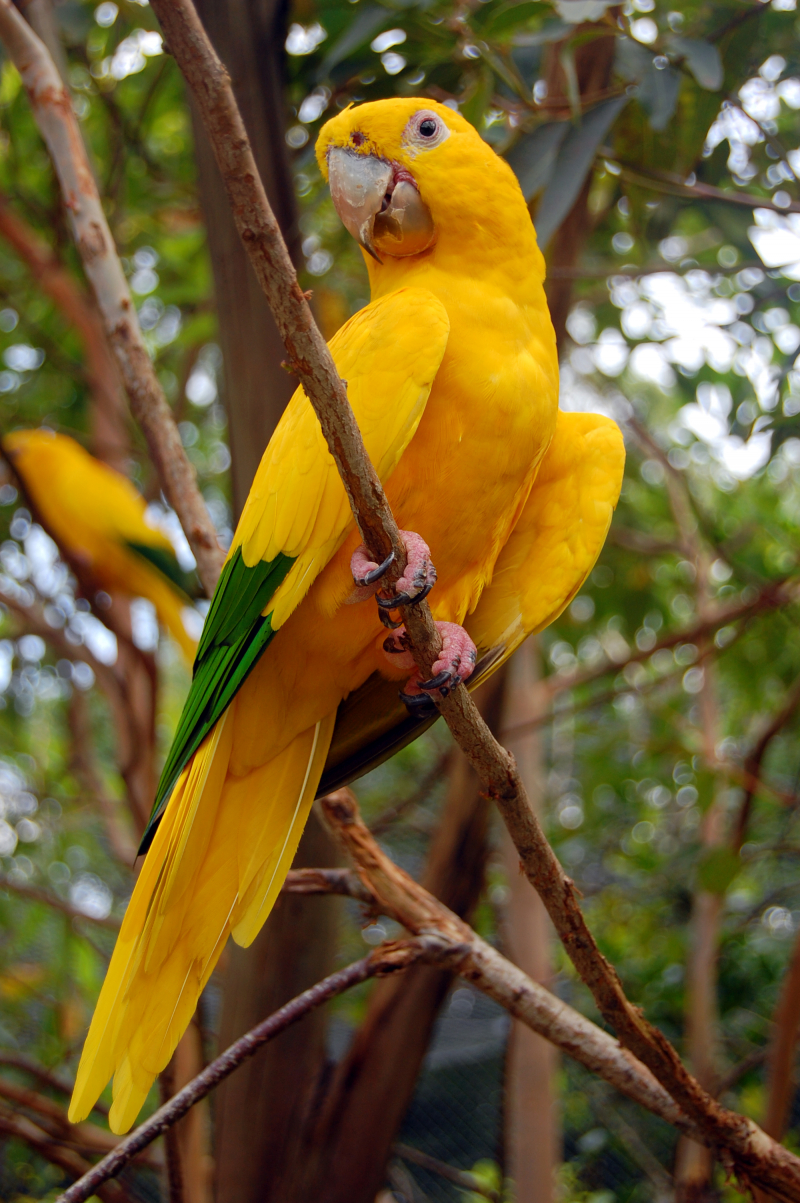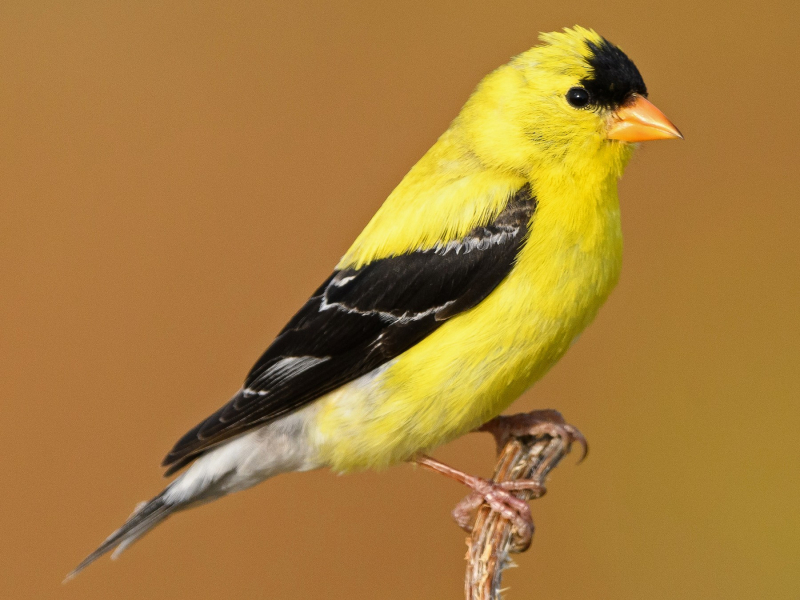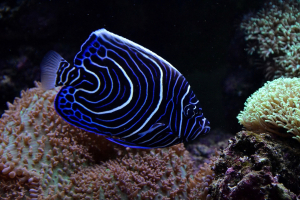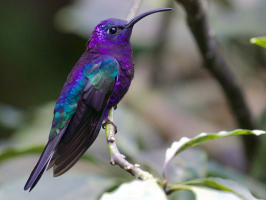Top 10 World's Most Beautiful Yellow Animals
Animals can vary greatly in color. Some are very brightly colored while others blend perfectly into their surroundings. In some species, males are more ... read more...strongly patterned and color while females are more monotonous in appearance. Among the colorful colors that leave an impression on the viewer, it is impossible not to mention yellow. Below is a list of the most beautiful yellow animals in the world, let's find out!
-
The Golden Poison Frog (Phyllobates terribilis), also known as the golden dart frog or golden poison arrow frog, is a poison dart frog endemic to the rainforests of Colombia. The golden poison frog has become endangered due to habitat destruction within its naturally limited range. Despite its small size, this frog is likely the most poisonous animal on the planet.
It has huge black eyes and varies in hue from a light lemon yellow to a lush gold. The poison dart frog is docile, wise, and gregarious in addition to being attractive, which gives the impression that it is harmless. Even picking up the frog with bare hands is risky due to how venomous it is. One milligram of the alkaloid poisons found in its skin can kill up to 20 people. The frog consumes insects that are poisonous in order to acquire the toxin, which it does not produce on its own. However, the poisons in the golden poison dart frog's skin can linger for years even if it is maintained as a pet and fed non-toxic insects.

Wikipedia 
Earth.com -
The Eyelash Viper is a species of venomous pit viper in the family Viperidae. Most of these strange but attractive snakes are found in Central and South America. Their ideal habitat is primarily found in low-elevation, shady, densely forested places close to bodies of water. It's interesting to note that experts now think the viper's "eyelashes" assist it in better concealing itself by making its silhouette more challenging to see while it hides among dense plant growth.
These ambush predators are exceptionally skilled hunters, despite being somewhat smaller than the majority of other pit vipers. Thankfully, they aren't particularly hostile toward humans despite their deadly nature and razor-sharp teeth. These animals mostly eat frogs, rodents, lizards, and occasionally birds, although they also eat other small animals.

Wikipedia 
Animal Spot -
The little 22-Spot Ladybird inhabits a variety of environments but is most common in grasslands, woodland margins, cities, and gardens. It consumes the mildew (fungus) that grows on certain plants. The 22-spot ladybird is found in Europe from the United Kingdom to Ukraine and south to Iran and Turkey.
A ladybird has four stages in its life cycle: the egg, the larval stage, in which the caterpillar goes through several molts, the pupal stage, during which the larva becomes an adult, and the adult stage, in which the female lays eggs in clusters of up to forty. The 22-spot ladybird is bright yellow with 22 round, black spots on the wing cases. It can be distinguished from the larger 14-spot Ladybird (the only other yellow and black ladybird) by its more rounded spots, which never merge into each other.

NatureSpot 
Natural History Society of Northumbria -
The Yellow Warbler (Setophaga petechia) is a new world warbler species. Yellow warblers are the most widespread species in the diverse genus Setophaga, breeding in almost the whole of North America, the Caribbean, and down to northern South America.
It prefers an elevation of 9,000 feet, but due to habitat destruction, pesticide contamination of the ground, and unintentional collisions with man-made items, the population is in decline. It can reach a maximum length of 4.7 to 5.1 inches and weighs between 0.3 and 0.4 ounces. In terms of appearance, it has a belly that is bright yellow and an upper side that is covered in golden-green feathers. Males have reddish-brown patterns on their breasts and flanks and are brilliantly colored overall. In the wild, the average lifespan of the bird species is ten years.

Wikipedia 
eBird -
The Yellow Tang is a type of salty water fish that is associated with the family of Acanthuridae. It includes the famous aquarium fish and seems beautiful and remarkable yellow animals. Yellow tangs consume other types of marine plant matter and benthic turf algae in the wild. They are frequently fed meat- and fish-based aquarium food while kept in captivity, but the long-term health effects of this diet are debatable.
Adult fish can reach lengths of 20 centimeters and thicknesses of 1-2 centimeters. Adult males are often bigger than adult females. Bright yellow is the color of yellow tangs. The yellow hue dims a little at night, and a large brownish area with a horizontal white band appears in the center. During daylight hours, they quickly take on their dazzling yellow color. They may harm coral in a reef tank, are potentially aggressive, and are susceptible to marine ich. Yellow tangs can be found in both male and female forms. Males can be distinguished during mating because they change their color and exhibit a "shimmering" characteristic.

National Aquarium 
The Spruce Pets -
Hippocampus kuda is a species of seahorse, also known as the Yellow Common Seahorse, estuary seahorse, yellow seahorse, or spotted seahorse. The common name sea pony has been used for this species under its synonym Hippocampus fuscus. The Hippocampus kuda can be found in waters from the Persian Gulf to Southeast Asia, Australia, Japan, and a number of Pacific islands, including Hawaii. It can also be found along the eastern coast of Africa, from Tanzania to South Africa, as well as the Indo-Pacific region, which spans the northwest Indian Ocean to the central areas of the Pacific Ocean. The coast of China and Australia are home to the majority of H. kuda populations.
The yellow seahorse is a little fish that can grow to be between 17 and 30 centimeters long. The body is quite huge, elongated, and spineless, with rounded bumps on every part. Compared to the body, the head is fairly huge. Short and thick describe the snout. The coronet is modest in size and rises toward the back; it occasionally sports longer or shorter filaments. The dorsal fin of certain adults has a black line slicing across it in the direction of its width. The body coloring is often dark with a gritty texture, but it can also have numerous tiny dark spots as well as yellow, cream, or reddish patches.

Creatures of the World Wikia - Fandom 
iStock -
The Golden Parakeet (Guaruba guarouba) or golden conure, is a medium-sized golden-yellow Neotropical parrot native to the Amazon Basin of interior northern Brazil. It is the only species placed in the genus Guaruba. It is endangered by deforestation, flooding, as well as the now illegal practice of catching wild animals for the pet trade.
The golden parakeet is 34–36 cm long, mostly yellow, with green on the outer wings, and it has a tail that is entirely yellow. It features pink legs, a huge horn-colored (gray) beak, brown irises, and pale-pink eye rings. External appearance is the same for males and females. Compared to adults, juveniles have more green and less yellow in their plumage. The juvenile's head and neck are primarily green, while the back and top sides of the tail are green and yellow, the breast is greenish, the eye rings are pale gray, and the legs are brown.

eBird 
Wikipedia -
Misumena vatia is a species of crab spider with a holarctic distribution. In North America, it is called the Goldenrod Crab Spider or flower (crab) spider, as it is commonly found hunting in goldenrod sprays and milkweed plants. Misumena vatia feeds primarily on common insects and frequently eats prey that is much bigger than themselves. They are harmless to humans, but they employ poison to paralyze their victims.
Because of their unusual ability to move sideways in addition to forward and backward, they are known as crab spiders. Before reaching their mature sizes, both men and females of this species go through a number of molts, while females must molt more in order to attain their greater size. Males are fairly little, growing to a maximum of 5 mm, whereas females can reach a maximum of 10 mm (0.39 in). Typically, misumena vatia are white, yellow, or have a combination of these two hues. In addition, they might appear in a pattern with white and a light shade of green or pink rather than yellow. Through the process of molting, they have the capacity to switch between these hues depending on their circumstances.

Wild Kratts Wiki - Fandom 
Flickr -
The American Goldfinch (Spinus tristis) is a small North American bird in the finch family. It is migratory, ranging from mid-Alberta to North Carolina during the breeding season, and from just south of the Canada–United States border to Mexico during the winter.
The American goldfinch, the only finch in its subfamily to go through a full molt, exhibits sexual dichromatism: the male is a bright yellow color in the summer and an olive color in the winter, while the female is a dull yellow-brown shade that only marginally brightens throughout the summer. During the breeding season, the male exhibits vividly colored plumage to entice a mate. With a conical beak to remove the seeds and quick feet to grab the stems of seedheads while feeding, the American goldfinch is a granivore designed for eating seedheads. Because it is a gregarious bird, it will congregate in sizable flocks while foraging and traveling. During nest construction, it may exhibit aggressive behavior, however, this behavior is transient.

eBird 
eBird -
The Panamanian Golden Frog (Atelopus zeteki), also known as Cerro Campana stub foot toad and other names, is a species of toad endemic to Panama. The streams along the high slopes of the Cordilleran cloud forests in west-central Panama are home to Panamanian golden frogs. Despite being listed as severely endangered by the IUCN, it may have gone extinct in the wild as of 2007. In an effort to save the species, individuals have been gathered for breeding in captivity.
One of Panama's most attractive frogs is the golden frog, which serves as the country's emblem. Light yellow-green to bright gold is the spectrum of skin tone, and some individuals have black blotches on their backs and legs. Males are normally between 35 and 48 millimeters long and weigh 3 to 12 grams, while females typically range from 45 to 63 millimeters long and 4 to 15 grams in weight.

Wikipedia 
Animals San Diego Zoo - San Diego Zoo Wildlife Alliance































